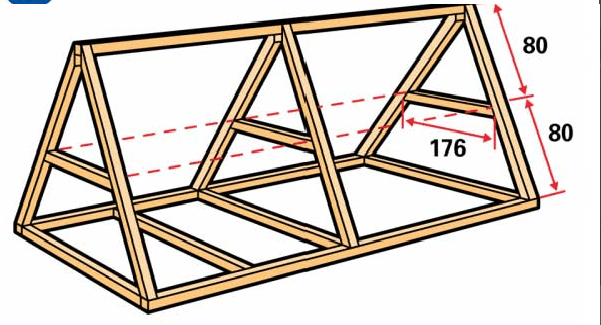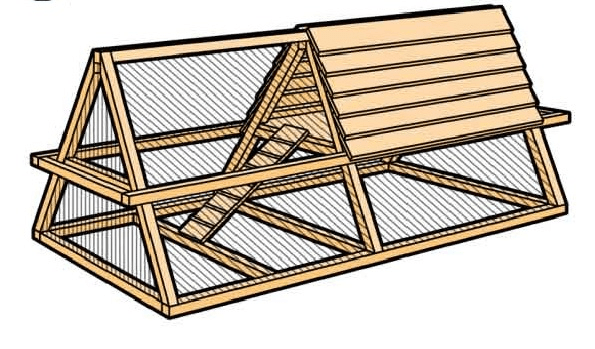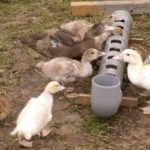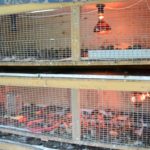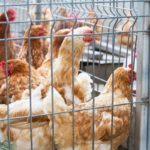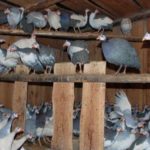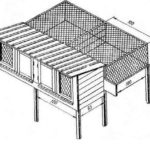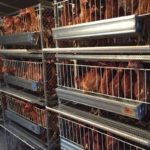Raising ducks is not an easy task, contrary to popular belief, which is erroneous. In addition to the farmer's skills, monetary costs will also be required. There are two breeding methods: outdoor keeping and in cages. The latter method is more modern and budget-friendly. At the same time, the key to a successful start in bird breeding is proper care of the young, which includes equipment for a cage for ducklings.
Types of cages for ducklings
Cage housing allows you to raise more birds even without a lot of space. With this method of growing on an area of 1 m2 up to 40 ducklings are placed, while in cage-free housing - no more than a dozen heads of young animals. Ducklings are raised in such structures for up to 15 days, and then the birds are released for walking.
There are several types of structures, depending on the number of livestock and the scale of production:
- Multi-tiered. This type of design allows you to compactly place a large number of birds in one area. It is more often used on poultry farms. The presence of sides reduces the amount of debris that birds can accidentally push out of the cage. The entire structure is constructed in such a way as to provide maximum comfort to the brood and at the same time compactly accommodate the livestock.
- With mesh floor. This type of cage is used in homestead farming. The structure is not difficult to build yourself, and it has many advantages. If the floor is made of mesh, it is very convenient to clean it, since a tray is installed under it. The latter is constantly filled with droppings without intervention from the farmer. It is easy to carry without disturbing the birds. In this case, clean air will circulate in the duckling house, which ensures the full development of the young.
Drawings and dimensions
For productive breeding of ducklings, a number of points need to be taken into account. Important data that affects the dimensions of the structure:
- The planned number of ducklings in the cage - on average, it is expected that there will be 300 cm per head2.
- The optimal dimensions of the structure for 10 ducklings - a product with parameters of 70 x 50 cm is considered suitable.
- The placement and number of drinking bowls and feeders - their number depends on the number of animals in the cage.
- Cell sizes.
An important parameter is the height of the structure. The duck should be able to stand to its full height without crouching or experiencing discomfort.To correctly calculate the height, the breed of ducklings is taken into account. According to average data, the optimal value varies between 30-40 cm.
Required tools and materials
The material can be anything, from metal to plywood. In the first case, the cage will be highly durable, but can quickly rust, especially in high humidity conditions. Rust is destructive for young and adult ducks. But plywood quickly deteriorates, which negatively affects the farmer’s budget.
Better to stop on a tree. It can be covered with linoleum, which will save the material from moisture. To work you will need:
- boards;
- metal grid;
- screwdriver;
- self-tapping screws;
How to make a cage for ducklings with your own hands
At home, it is not difficult to make a structure from a mesh. A detailed video of the manufacturing process will also help:
Before starting assembly, you need to prepare your work area. It is imperative to level the surface where you plan to carry out the work if there is no suitable place.
Assembly procedure:
- First, two frames of the same size are assembled from boards. The length of the board is 1.5 m.
- Then several support beams 0.5 m long are attached to the first frame.
- The doors are made from wooden beams covered with mesh.
- The lid is attached to the top - the remaining frame, which has already been prepared.
- The cage is lined with prepared mesh.
- The latter is also placed on the bottom.
- Finished products are equipped with drinkers and feeders.
In addition, the cage must be installed in a warm barn. Young animals should feel comfortable in it.It is necessary to exclude conditions under which they huddle together to warm themselves. To make the livestock comfortable, sawdust, coarse sand or chopped straw are used as bedding at the end. When making a floor for ducklings, it is better to prefer peat moss. The thickness of the layer depends on the weather:
| Season | Litter thickness, cm |
| Summer | 10 |
| Winter | 40 |
Cage keeping of birds allows one to raise a large number of birds in a small area. The main thing is to correctly calculate the dimensions and arrange a structure that will be comfortable for both ducklings and adult livestock.

